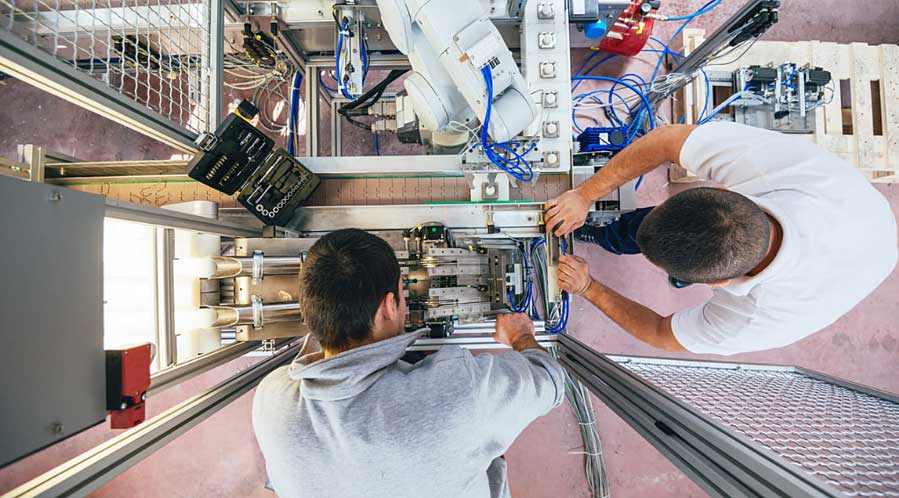Bluetooth and Wi-Fi Interoperability Testing: 8 Checks to Give Your Consumer Product the Green Light
By: Nextgen | On: Dec 08, 2020 | In: Blog Posts
Anyone tasked with managing Bluetooth and Wi-Fi interoperability testing knows one simple truth: getting a consumer product ready to go to market is far from straightforward.
Different elements of the business must come together and coordinate under pressure to meet a strict deadline. And with major reputational impacts on the line, the testing processes of any new product must be rigorous, accurate and stretch beyond the relative limitations of manual testing.
With product use cases growing and complexity increasing, automated Bluetooth and Wi-Fi interoperability testing is now becoming essential. But QA leaders still need to provide the direction of testing. And doing so requires a deep understanding of the potential issues and problems end users may experience.

Over the last two decades, Bluetooth and Wi-Fi have made huge progress. Yet eight common interoperability issues remain present in Bluetooth and Wi-Fi products -- despite big improvements in compatibility, power demands and range over recent years.
Use this 8 point checklist to ensure your testing regime covers each potential issue before you go to market.
1. Device Range
There is no clear and consistent operable range for Bluetooth connections.
Instead, it varies significantly between devices and in different environments. In cars, for example, we have found that effective Bluetooth signal strength varies within the cockpit depending on how many people are in the car.
Even interior design features, for example metal surrounds on a car’s cup holders, can impact Bluetooth operability.
2. Inconsistent Profile Support
Different devices support the Bluetooth stack in different ways, even though devices may follow the Bluetooth specifications and achieve certification, there still remains implementation differences that lead to interoperability issues in the field. For example, Audio/Video Remote Control Profile (AVRCP) is commonly used in car infotainment systems, some AVRCP devices support browsing of media; others do not. This can have an effect on the usability of the infotainment system when used with certain devices.
Spotting and rectifying causes of interoperability problems during testing can help to eliminate end-user frustrations.
3. Device pairing, usability and connection issues
Initial pairing and establishing a connection is the first step in any Bluetooth connection process. If the initial ‘out of the box’ experience is not reliable, a product is fatally flawed.
Some devices regularly disconnect the link and, in some cases, fail to reconnect. We have also found some device manufacturers produce units that are optimised to perform well on either Android or Apple devices - with good performance on one coming at the expense of good performance on the other.
4. Wi-Fi throughput
Wi-Fi data transmission speed (throughput) may not meet expectations, leading to poor user experiences from connected services such as on-demand video streaming.
Other challenges that can affect Wi-Fi include client authentication issues with access points or routes (where the user is unable to connect over Wi-Fi, but for no clear reason), and general stability and long-term connection reliability, where random drop-outs can lead to poor download latency and data stalling.
5. Different compliance standards
Over the last two decades, at least six major iterations of Bluetooth standards have been rolled out. That means older devices may not be operating on the same standards as newer products. For example, a new Bluetooth LE mouse may not be detected by an older laptop computer supporting earlier Bluetooth standards. Investing in ongoing market research and access to a library of both the latest Bluetooth devices and a selection of legacy products is the only way ensure full compatibility.
Wi-Fi standards have been through even more iterations. Different Wi-Fi standards will often still work, yet mismatches may lead to user disappointment such as being unable to benefit from increased speed and throughput supported by a new Wi-Fi access point when using older devices to connect. Build a library of Wi-Fi Access Points of different specification and ensure testing includes older legacy APs as well as latest models to ensure good coverage, throughput and stability.
In summary it is crucial to check and communicate with the end user how your device operates with older devices built to previous Bluetooth and Wi-Fi standards.
6. Slow data transfer at the extremes of range
As the distance between devices increases, data rates drop. But it is crucial to consider the wider context.
At 1-2mpbs, Bluetooth 5 / LE transfer speeds may be considerably slower than Wi-Fi or future Bluetooth iterations. But if 1-2mbps is fast enough to do what the user requires, this can quickly become a side issue.
7. Poor audio quality
Audio quality can be impacted by several factors, including the distance between devices, interference (packet loss) and coexistence. Simultaneous use of Wi-Fi and Bluetooth can also push devices beyond their operating limits.
This can lead to increased latency, audio streams being interrupted (look out for interference, gaps or pauses) or completely stopped.
8.Differing frequency bands
Wi-Fi channels are not universal: they differ from region to region (for example between US and EU), meaning the location a device is set to can have a big impact on interoperability functions if there is a channel mismatch. 2.4GHz Wi-Fi and Bluetooth operate in the same frequency range so testing co-existence performance for both standards is essential.
5Ghz Wi-Fi and Mesh systems do not solely operate at 5GHz and so the 2.4GHz band also remains essential. 5GHz systems have multiband radios which operate simultaneously on multiple frequency bands, and so 2.4GHz co-existence testing remains an important component of the Wi-Fi interoperability test plan.
Enjoying optimal Wi-Fi performance may prove difficult if the operating channels between devices are different. This can lead to devices from different parts of the world being unable to communicate due to channel mismatches, potentially causing connection headaches for globetrotting end users.
Bluetooth and Wi-Fi Interoperability Testing: No Magic Necessary
“Any sufficiently advanced technology is indistinguishable from magic.”
That was the verdict from inventor and science fiction author Arthur C Clarke. But as QA testers, we know the secret is rather more grounded. There is no magic: just hard, forensic, intelligent testing backed by a well thought through strategy to take a device from concept to market.
Working through these tests will help you to ensure the best possible user experience. In turn, that means reputational benefits and protections for your company - giving you the optimal chance of long-term success.
To speak to a Nextgen expert about how you can create better connected products with automated interoperability testing, contact us today.


